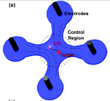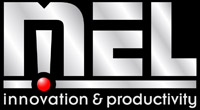|
The NNN Newsletter
Challenges for Sustaining Leadership in Nanotechnology in the U.S.
 The U.S. investment in nanoscience and technology since 2001 through the National Nanotechnology Initiative (NNI) has provided a "catalytic and substantial impact" according to the recent report by the President's Council of Advisors on Science and Technology (PCAST), which offered an assessment of the first ten years of the NNI along with recommendations for future investments and directives. The report further acknowledged the NNI investment has met its intended goals and objectives, including U.S. leadership in fundamental research in nanotechnology and economic impact in the form of job creation and establishment of new industries. While the latter is difficult to assess directly since many nanotechnology related jobs exist within established industries that have naturally evolved into nanotechnology R&D, conservative estimates of 160,000 U.S. jobs that support the manufacturing of nano-enabled products is a major step towards the 800,000 workers projected for nanotechnology by 2015. In part, the economic downturn has had an impact on growth over the past 2 years with reduced demand for nanomaterials and nano-intermediates, slower adoption of technology and nanomanufacturing platforms, and decreased market projections resulting in small firms going out of business and state and regional initiatives stalling. The U.S. investment in nanoscience and technology since 2001 through the National Nanotechnology Initiative (NNI) has provided a "catalytic and substantial impact" according to the recent report by the President's Council of Advisors on Science and Technology (PCAST), which offered an assessment of the first ten years of the NNI along with recommendations for future investments and directives. The report further acknowledged the NNI investment has met its intended goals and objectives, including U.S. leadership in fundamental research in nanotechnology and economic impact in the form of job creation and establishment of new industries. While the latter is difficult to assess directly since many nanotechnology related jobs exist within established industries that have naturally evolved into nanotechnology R&D, conservative estimates of 160,000 U.S. jobs that support the manufacturing of nano-enabled products is a major step towards the 800,000 workers projected for nanotechnology by 2015. In part, the economic downturn has had an impact on growth over the past 2 years with reduced demand for nanomaterials and nano-intermediates, slower adoption of technology and nanomanufacturing platforms, and decreased market projections resulting in small firms going out of business and state and regional initiatives stalling.
In the midst of this less than rosy outlook there remains optimism in the ability of the U.S. to correct the course from which nanomanufacturing will be well positioned to lead the way for future economic growth. In this context, the NNI is considering ways in which to provide the necessary infrastructure both to parlay its investment in nanotechnology into sustainable economic growth and to augment existing technology manufacturing capabilities. These were some of the key recommendations made in the PCAST report which cited increased emphasis on nanomanufacturing and commercialization of nano-enabled products, increased commitment to workforce training and education in nanofabrication, and strengthening and consolidating efforts and knowledge in environmental, health, and safety research. That said, the U.S. and NNI face significant challenges in achieving these objectives while maintaining global leadership in nanotechnology overall.
More...
Regards,
Jeff Morse, Managing Director,
National Nanomanufacturing Network
Learn More about the 
Quantum Dots Precisely Placed by Controlled Flow
 Solution-synthesized nanostructures have great potential as the active components in the areas of photonics, electronics and biology. Unfortunately, typical synthesis methods produce particles with a distribution of properties, while most applications require well-controlled and specific behavior. The challenge, then, is to take solution of a relatively random collection of particles, select a single one with the desired properties, and then place it in, for example, the active region of a device structure. The development of techniques for the manipulation of small particles has been an active area of research for many years, and great strides have been made using optical tweezers and dielectrophoretic devices. However, these suffer from a number of shortcomings. Rather than trying to grab hold of the particle of interest directly, Ropp et al. chose an alternative approach—electro-osmotic flow (EOF)—that relies on controlling the flow of the fluid in which the particle is suspended to adjust its position. More.... Solution-synthesized nanostructures have great potential as the active components in the areas of photonics, electronics and biology. Unfortunately, typical synthesis methods produce particles with a distribution of properties, while most applications require well-controlled and specific behavior. The challenge, then, is to take solution of a relatively random collection of particles, select a single one with the desired properties, and then place it in, for example, the active region of a device structure. The development of techniques for the manipulation of small particles has been an active area of research for many years, and great strides have been made using optical tweezers and dielectrophoretic devices. However, these suffer from a number of shortcomings. Rather than trying to grab hold of the particle of interest directly, Ropp et al. chose an alternative approach—electro-osmotic flow (EOF)—that relies on controlling the flow of the fluid in which the particle is suspended to adjust its position. More....
Massachusetts Issues Nano-EHS Guidance Document
 Massachusetts' Office of Technical Assistance and Technology (OTA) recently released its "OTA Technology Guidance Document: Nanotechnology - Considerations for Safe Development" which has been in development for the past couple of years. The document begins by noting the tremendous positive influence nanotechnology is predicted to have in the fields of biomedical devices, electronics, clean energy, and materials engineering, while at the same time acknowledging that "there are indications of potential harm from certain exposures and release of engineered nanoparticles." OTA also believes that there "is little uncertainty" regarding available means to prevent potential workplace exposure to nanoscale materials. Simply put, despite unknown EHS risks, there is more than adequate knowledge to control potential exposure in OTA's view. More.... Massachusetts' Office of Technical Assistance and Technology (OTA) recently released its "OTA Technology Guidance Document: Nanotechnology - Considerations for Safe Development" which has been in development for the past couple of years. The document begins by noting the tremendous positive influence nanotechnology is predicted to have in the fields of biomedical devices, electronics, clean energy, and materials engineering, while at the same time acknowledging that "there are indications of potential harm from certain exposures and release of engineered nanoparticles." OTA also believes that there "is little uncertainty" regarding available means to prevent potential workplace exposure to nanoscale materials. Simply put, despite unknown EHS risks, there is more than adequate knowledge to control potential exposure in OTA's view. More....
NanoBusiness Alliance Interview with David Arthur
 David J. Arthur is President and CEO of SouthWest NanoTechnologies, Inc. and has more than 30 years experience commercializing products utilizing advanced materials, including work at such companies as Rogers Corporation, A.T. Cross Co., TPI Composites, Helix Technologies, and Eikos. In this interview, Steve Waite talk to Mr. Arthur about SouthWest NanoTechnologies' carbon nanotube materials and technologies, their commercialization potential and the environmental, health and safety risks associated with nanotubes. Mr. Arthur holds a BS degree in chemical engineering from Tufts University, MS degree in chemical engineering from the University of Connecticut and MBA degree from Northeastern University. In 2005, he co-founded Chasm Technologies, a consulting firm in the Boston area that helps its clients commercialize new products through smart application of materials science and process technology. For the past four years, he has been CEO of SouthWest NanoTechnologies in Norman, OK, a leading producer of single-wall and specialty multi-wall carbon nanotube materials for coatings and composites applications. More.... David J. Arthur is President and CEO of SouthWest NanoTechnologies, Inc. and has more than 30 years experience commercializing products utilizing advanced materials, including work at such companies as Rogers Corporation, A.T. Cross Co., TPI Composites, Helix Technologies, and Eikos. In this interview, Steve Waite talk to Mr. Arthur about SouthWest NanoTechnologies' carbon nanotube materials and technologies, their commercialization potential and the environmental, health and safety risks associated with nanotubes. Mr. Arthur holds a BS degree in chemical engineering from Tufts University, MS degree in chemical engineering from the University of Connecticut and MBA degree from Northeastern University. In 2005, he co-founded Chasm Technologies, a consulting firm in the Boston area that helps its clients commercialize new products through smart application of materials science and process technology. For the past four years, he has been CEO of SouthWest NanoTechnologies in Norman, OK, a leading producer of single-wall and specialty multi-wall carbon nanotube materials for coatings and composites applications. More....
Read more on  |
Upcoming Events
August 29 - September 2, 2010
COMS 2010
August 30 - September 1, 2010
Seeing at the Nanoscale VIII
August 30 - September 1, 2010
Nanofibers for the 3rd Millenium
September 17 - 19, 2010
ICMMT 2010
September 27 - 29, 2010
TAPPI International Conference on Nano for the Forest Product Industry
View Full Calendar
Advertisement

Upcoming Calls
August 30, 2010
BIT's 1st Annual World Congress of Nanomedicine
Deadline for poster abstracts
September 14, 2010
IEEE Nanosensors 2010
Open Poster Program Submission Deadline
September 15, 2010
Nanoinformatics 2010
Deadline for papers and poster abstracts
Advertisement

Recently Published
From Our Affiliates
Role of Surface Charge Density in Nanoparticle-Templated Assembly of Bromovirus Protein Cages
ACS Nano 4(7): 3853-3860
Electrical Characterization of Composition Modulated In1-xSbx Nanowire Field Effect Transistors by Scanning Gate Microscopy
Journal of Nanoscience and Nanotechnology 10(10): 6779-6782
Fabrication of Conductive Microcapsules via Self-Assembly and Crosslinking of Gold Nanowires at Liquid-Liquid Interfaces
Small 6(13): 1402-1405
Affiliated Centers






Recently Issued Patents
Method for Making Thin Film Transistor
Patent #7754526
Issued July 13
Organic silicon oxide core-shell particles and preparation method thereof
Patent #7754330
Issued July 13
Programmable power management using a nanotube structure
Patent #7755111
Issed July 13


|
 Volume
3 Issue 8 - August 2010
Volume
3 Issue 8 - August 2010 The U.S. investment in nanoscience and technology since 2001 through the National Nanotechnology Initiative (NNI) has provided a "catalytic and substantial impact" according to the
The U.S. investment in nanoscience and technology since 2001 through the National Nanotechnology Initiative (NNI) has provided a "catalytic and substantial impact" according to the  Solution-synthesized nanostructures have great potential as the active components in the areas of photonics, electronics and biology. Unfortunately, typical synthesis methods produce particles with a distribution of properties, while most applications require well-controlled and specific behavior. The challenge, then, is to take solution of a relatively random collection of particles, select a single one with the desired properties, and then place it in, for example, the active region of a device structure. The development of techniques for the manipulation of small particles has been an active area of research for many years, and great strides have been made using optical tweezers and dielectrophoretic devices. However, these suffer from a number of shortcomings. Rather than trying to grab hold of the particle of interest directly, Ropp et al. chose an alternative approach—electro-osmotic flow (EOF)—that relies on controlling the flow of the fluid in which the particle is suspended to adjust its position.
Solution-synthesized nanostructures have great potential as the active components in the areas of photonics, electronics and biology. Unfortunately, typical synthesis methods produce particles with a distribution of properties, while most applications require well-controlled and specific behavior. The challenge, then, is to take solution of a relatively random collection of particles, select a single one with the desired properties, and then place it in, for example, the active region of a device structure. The development of techniques for the manipulation of small particles has been an active area of research for many years, and great strides have been made using optical tweezers and dielectrophoretic devices. However, these suffer from a number of shortcomings. Rather than trying to grab hold of the particle of interest directly, Ropp et al. chose an alternative approach—electro-osmotic flow (EOF)—that relies on controlling the flow of the fluid in which the particle is suspended to adjust its position.  Massachusetts' Office of Technical Assistance and Technology (OTA) recently released its "OTA Technology Guidance Document: Nanotechnology - Considerations for Safe Development" which has been in development for the past couple of years. The document begins by noting the tremendous positive influence nanotechnology is predicted to have in the fields of biomedical devices, electronics, clean energy, and materials engineering, while at the same time acknowledging that "there are indications of potential harm from certain exposures and release of engineered nanoparticles." OTA also believes that there "is little uncertainty" regarding available means to prevent potential workplace exposure to nanoscale materials. Simply put, despite unknown EHS risks, there is more than adequate knowledge to control potential exposure in OTA's view.
Massachusetts' Office of Technical Assistance and Technology (OTA) recently released its "OTA Technology Guidance Document: Nanotechnology - Considerations for Safe Development" which has been in development for the past couple of years. The document begins by noting the tremendous positive influence nanotechnology is predicted to have in the fields of biomedical devices, electronics, clean energy, and materials engineering, while at the same time acknowledging that "there are indications of potential harm from certain exposures and release of engineered nanoparticles." OTA also believes that there "is little uncertainty" regarding available means to prevent potential workplace exposure to nanoscale materials. Simply put, despite unknown EHS risks, there is more than adequate knowledge to control potential exposure in OTA's view.  David J. Arthur is President and CEO of SouthWest NanoTechnologies, Inc. and has more than 30 years experience commercializing products utilizing advanced materials, including work at such companies as Rogers Corporation, A.T. Cross Co., TPI Composites, Helix Technologies, and Eikos. In this interview, Steve Waite talk to Mr. Arthur about SouthWest NanoTechnologies' carbon nanotube materials and technologies, their commercialization potential and the environmental, health and safety risks associated with nanotubes. Mr. Arthur holds a BS degree in chemical engineering from Tufts University, MS degree in chemical engineering from the University of Connecticut and MBA degree from Northeastern University. In 2005, he co-founded Chasm Technologies, a consulting firm in the Boston area that helps its clients commercialize new products through smart application of materials science and process technology. For the past four years, he has been CEO of SouthWest NanoTechnologies in Norman, OK, a leading producer of single-wall and specialty multi-wall carbon nanotube materials for coatings and composites applications.
David J. Arthur is President and CEO of SouthWest NanoTechnologies, Inc. and has more than 30 years experience commercializing products utilizing advanced materials, including work at such companies as Rogers Corporation, A.T. Cross Co., TPI Composites, Helix Technologies, and Eikos. In this interview, Steve Waite talk to Mr. Arthur about SouthWest NanoTechnologies' carbon nanotube materials and technologies, their commercialization potential and the environmental, health and safety risks associated with nanotubes. Mr. Arthur holds a BS degree in chemical engineering from Tufts University, MS degree in chemical engineering from the University of Connecticut and MBA degree from Northeastern University. In 2005, he co-founded Chasm Technologies, a consulting firm in the Boston area that helps its clients commercialize new products through smart application of materials science and process technology. For the past four years, he has been CEO of SouthWest NanoTechnologies in Norman, OK, a leading producer of single-wall and specialty multi-wall carbon nanotube materials for coatings and composites applications. 





